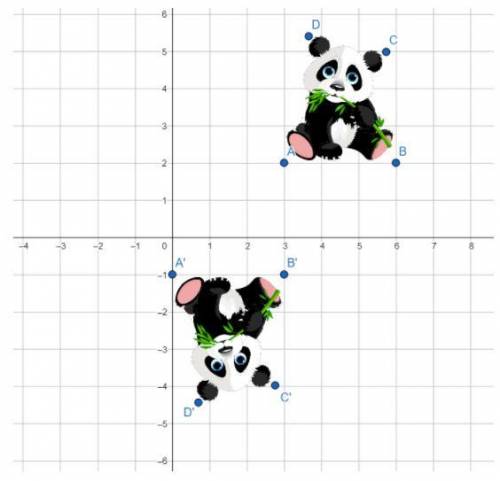
Mathematics, 18.03.2022 14:30 Jefferson09
Which two sequential transformations would produce the image of the panda shown in the graph? Reference points have been provided for clarity.
options:
Reflect over the y-axis.
Then reflect over the line y=0.
Rotate 90° clockwise around the origin.
Then reflect over the line y=1.
Reflect over the x-axis.
Then translate by the rule (x, y)→(x−3,y+1)
Rotate 180° counter-clockwise around point (2, 1).
Then translate by the rule (x, y)→(x+2,y−1).


Answers: 1


Other questions on the subject: Mathematics

Mathematics, 21.06.2019 21:00, feyundre52
Hurry if the population of of an ant hill doubles every 10 days and there are currently 100 ants living in the ant hill what will the ant population be in 20 days
Answers: 2


Mathematics, 22.06.2019 00:00, kklove6700
Which of the following is the maximum value of the equation y=-x^2+2x+5 a. 5 b. 6 c. 2. d. 1
Answers: 1

Mathematics, 22.06.2019 02:20, IkweWolf1824
Find the volume of the wedge cut from the first octant by the cylinder z=12-3y^2 and the plane x+y=2.
Answers: 1
You know the right answer?
Which two sequential transformations would produce the image of the panda shown in the graph? Refere...
Questions in other subjects:

Mathematics, 05.10.2020 15:01


Health, 05.10.2020 15:01


English, 05.10.2020 15:01

Mathematics, 05.10.2020 15:01

Mathematics, 05.10.2020 15:01


Geography, 05.10.2020 15:01

Mathematics, 05.10.2020 15:01



